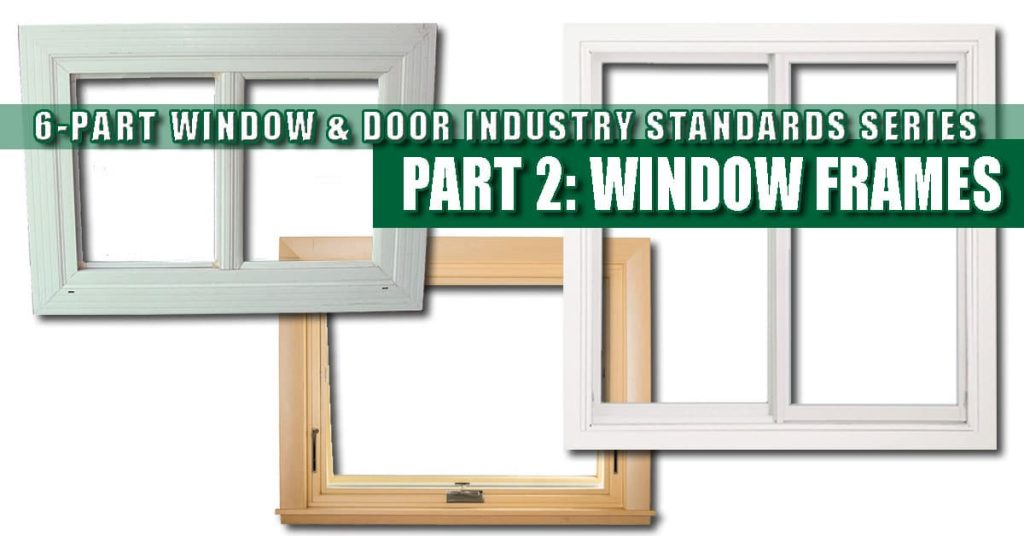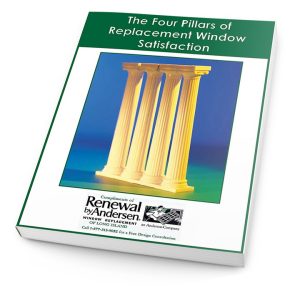MENU


Last week our new 6-part Renewal by Andersen of Long Island replacement window Industry Standards education series began with a discussion of energy efficiency standards for the whole window unit. This week, we will begin to delve into the individual parts, because knowing which individual components perform better on their own, will help you make better choices when selecting the windows and patio doors for your home. This week, let’s look more closely at how window frame materials impact energy-efficiency.
While there are many different types of window frame materials available on the market today, and some new ones are gaining popularity, we’ll discuss the most common types of frames available in our market.
Every frame material has some benefits and some drawbacks. When manufacturers consider how to boost energy-efficiency performance, they often start with finding ways to improve thermal resistance. Thermal resistance is a measurement that refers to how well a window controls heat (or cold) flow. A frame with superior insulating properties is said to perform better than one built with material that conducts heat. Following you’ll find a bit more information about fiberglass, metal, wood, vinyl and composite frame materials.
Fiberglass window frames are strong and stable. When air cavities are filled with insulation, thermal performance improves, making them better at controlling heat transfer than non-insulated vinyl, metal or wood. On the downside, replacement windows constructed with fiberglass frames tend to be on the upper high-end of the price spectrum.
The good points, low maintenance, light-weight and strength, are unfortunately overshadowed by the rapid heat conductance. Aluminum window frames rate very low on insulating performance. In fact, metal window frames can be a health and safety as they can get very hot to the touch in summer and often freeze and accumulate ice on the inside of the window frame in winter. Window manufacturers can improve performance slightly by adding a thermal break during the construction process, but not all companies do this.
The original window frame material, wood, offers very good insulating properties and make a great interior material for clad replacement windows and patio doors. On the exterior, however, wood window frames have the big disadvantage of needing regular maintenance, including scraping, sanding and re-painting every couple of years. Wood as a building material, absorbs water, expands and contracts with changing weather conditions and tends to weaken over time faster than modern composites.
Vinyl (uPVC) window frames don’t require the same maintenance as wood windows and offer better thermal performance than metal windows. They don’t require regular painting or absorb moisture like wood frames. Like Fiberglass, improved vinyl frames have cavities that can be filled with insulation to improve thermal performance, have the distinct disadvantage of thermal movement. Vinyl as a building material, expands greatly in hot weather and shrinks in cold weather. This is the reason vinyl siding is not nailed firmly to the side of a house, but “hung” on nails that protrude slightly to allow for the seasonal movement. Because of this extreme movement, when vinyl windows are firmly attached to the house structure, their movement is restricted, which can cause gaps between the window unit and your home’s outer shell and in extreme cases to separate from its individual components. When not used as a structural material (as in the siding referenced above), vinyl is a good cladding material. Vinyl makes a great wrap, or cladding, material to protect other structural materials from weathering. Our sliding patio doors are built with a rigid vinyl sheath to protect the wooden core.
Composite window frames are made by combining two or more materials to get the best performance characteristics in one package. Renewal by Andersen of Long Island’s patented Fibrex window frames are structurally sound like wood and offer superior weather resistance like vinyl, while having even better thermal resistance. Fibrex combines the light-weight, moisture resistant properties of vinyl with the strength and stability of wood, resulting in a zero-maintenance window that resists mold, rot, flaking, peeling and fading.
Replacement window frame performance ultimately depends on superior construction and high-quality components. Drop by our showroom to speak with a Renewal by Andersen of Long Island specialist if you have more questions about energy-efficiency standards and window frame types. Or, schedule a private home consultation today to learn more about our patented Fibrex frames by filling in the short form on this page, or calling (866) 609-5033.
Check out this post for more information on Fibrex composite window frames.

Learn Everything You Need to Know BEFORE Buying Replacement Windows